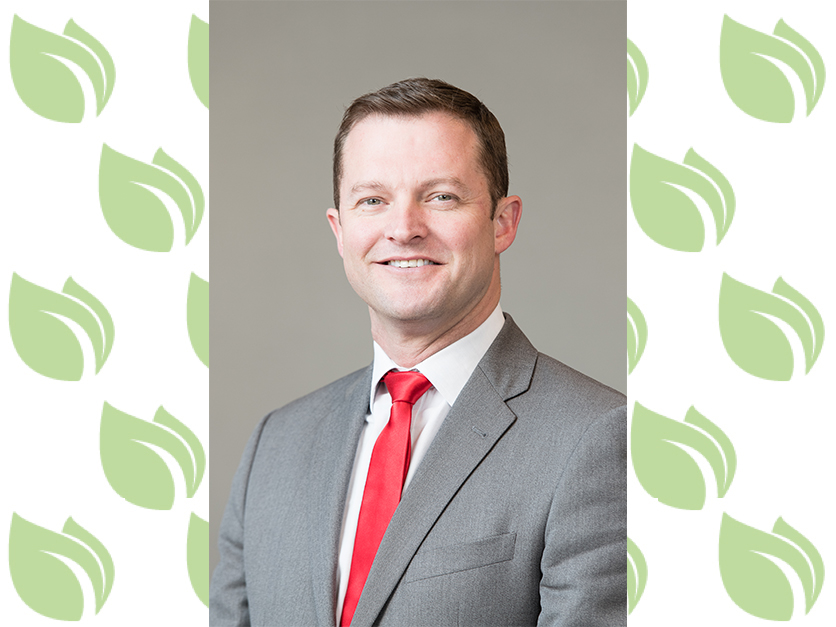When I left being a commodities trader to run the U.S. Grains Council's operations in Mexico, my role shifted from attracting new customers in a very dynamic marketplace to building programs to help those customers stabilize and grow their own operations.
Since stepping into the role of the Council’s CEO last summer, I have seen every day how our staff is taking up this mantel around the world, from the most developed grain markets in North Asia to those rapidly growing in Latin America and infant markets in East Africa.
With regard to stakeholders in global agricultural development, our model is a hybrid. We are fundamentally interested in building markets for our members - U.S. farmers and agribusinesses - that will last. We are charged to identify and address constraints to demand growth, whatever that may mean.
In practice, this often looks a lot like many of the activities undertaken by rural development or international aid programs, including offering educational opportunities about the basics of poultry management and fuel blending, helping our customers write contracts, clarifying infrastructure challenges and serving as a connecting mechanism between buyers and sellers who may otherwise find it hard to find and get to know one another.
Win-win is a cliché, but in our line of work, that’s what we are working toward, knowing that any business arrangement not achieving that goal is simply not worth the investment because it won’t stand the test of time.
Our membership sees this big picture, in part because the results are clear.
In the 1960s and 1970s, animal agriculture industries in North Asia were just beginning to develop. Providing basic technical assistance, breeding stock, on-the-ground education, contracting education and ongoing information about crop conditions helped those markets grow and mature into the powerhouses they are today, feeding their own populations and offering value-added agricultural products back to the global marketplace.
Mexico over the past 25 years since the North American Free Trade Agreement (NAFTA) came into effect has been another example of the growth that can happen when strong trade policy meets active market development on the ground. The ability of livestock industries in Mexico to expand to meet growing local needs is in part because of the partnership between Mexican industry and U.S. grain producers who offer a consistent, stable and affordable supply of feedstock.
In North Africa, a model of market development that helped Morocco and Tunisia build strong local poultry industries has driven grain purchases, brought safer meat products to the market, increased consumer choice, and opened new countries for imports of U.S. poultry and beef products – all while becoming a model for the livestock sectors in other countries in Africa to follow.
These three regions now represent our top customers and our top potential customers for U.S. corn, sorghum and distiller's dried grains with solubles (DDGS) - three of the commodities the Council represents.
Our sister organizations in the cooperator community, representing the breadth and depth of U.S. agriculture from row crops to specialty food products, have similar stories to tell of growing markets that consistently benefit their farmer members and the U.S. economy while providing expanded growth opportunities for those to whom they are selling.
During the recent trade policy challenges, rather than walking away, we - with the dollars and energy offered by our members and the U.S. Department of Agriculture – have doubled down in markets we know have potential for years to come, especially if local market participants are engaged appropriately.
When asked why we invest in family cattle operations in Southeast Mexico, start-up aquaculture operations in Southeast Asia or feed formulation training for West Africans, the answer is simple: in 10 years, those protein producers will be our members’ fastest growing customers.
In the long-term market development business, we want to achieve sales today, of course, but we must also ensure systems are in place for our members’ and our customers’ children and even grandchildren to be able to continue to grow their farming operations. We have found this is a relatable sentiment to people all around the globe.
There’s nothing more important to profitability than a diverse base of strong customers, grounded in business models that drive purchases over time due to consistent increases in downstream demand. Agriculture market development is a long game. Yet we know from experience, analysis and a hard look at the numbers that it's a winning proposition for our farmers in the United States, our customers overseas and their consumers who have access to more and better food and fuel because of our partnerships.
Ryan LeGrand serves as the President and CEO for the U.S. Grains Council (USGC), a non-profit organization that promotes the global use of U.S. barley, corn, sorghum and related products including ethanol and distiller’s dried grains with solubles (DDGS).
LeGrand joined the Council in 2015 as the assistant director and then director of the Council’s Mexico office where he identified and addressed all relevant trade, technical and policy-related factors relevant to building and maintaining the market for U.S. grains and co-products in Mexico. Before joining the Council, LeGrand worked for Gavilon as the director of ingredients, located in Guadalajara, Mexico. In this capacity, he managed the company’s feed ingredients trading, import and distribution throughout Mexico. LeGrand also served as the director of exports for Hawkeye Gold, LLC where he exported DDGS to Latin America and Asia. LeGrand earned a bachelor’s degree from Oklahoma State University in international business.
Editor's Note: Agri-Pulse and The Chicago Council on Global Affairs are teaming up to host a monthly column to explore how the U.S. agriculture and food sector can maintain its competitive edge and advance food security in an increasingly integrated and dynamic world.

